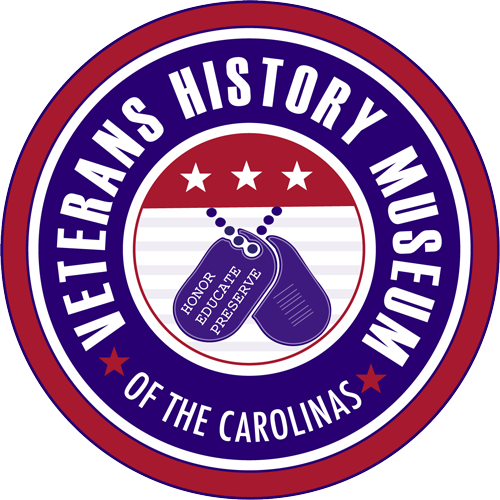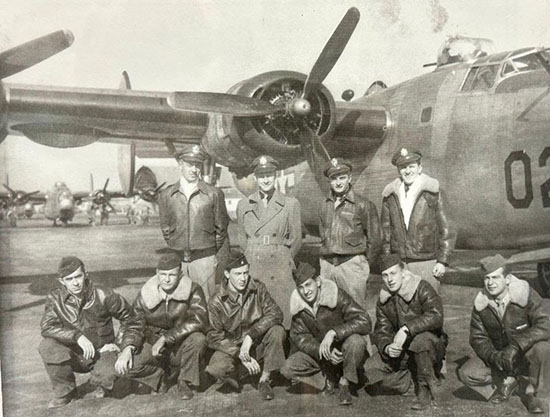National Security Act of 1947
The day was 18 September 1947, and on the implementation of the National Security Act of 1947, the US Air Force left the Army Air Forces and became a separate service. This reorganization placed the Air Force on an equal footing with the Army and Navy.
“Airpower Anytime, Anywhere”
It was formed primarily to exploit the possibilities of manned aircraft and to provide a delivery system for atomic, or more accurately, nuclear bombs. So its motto, evolving over time, became, “Aim High…Fly-Fight-Win.” Later, “Airpower Anytime, Anywhere” was added.
Pinks and Greens
Here in the Veterans History Museum of the Carolinas we are proud to honor the rich, albeit short, history of the service by presenting a snapshot of those who served in WWI to the present day. Walking around the display you will notice a uniform known as “pinks and greens” because of the slight pink tint to the taupe trousers. It was the Army’s standard uniform from WWI until 1959. You see it here because the Air Force was still part of the Army Air Corps until 1947.
The amazing story of “The Piggyback Flight” shown in the painting above is told by museum volunteer Rodney Remus in the short YouTube video below.
“Pocket Rocket” and Nomex
The blue “service dress” uniform displays the rank of Technical Sergeant. On the left breast pocket is the Missileer badge, commonly called the “Pocket Rocket,” which signifies those individuals trained in nuclear weapons technology. Above that is a badge that indicates the wearer as an Air Force Medical Technician. This uniform was worn until 1993.
Another uniform in the room is the Nomex flight suit with helmet. Nomex is a highly flame-retardant material first produced in the early 1960s for the Navy but was quickly adapted for use by all military services. The name tag on the left breast indicates that the flight suit belonged to a pilot who was also a qualified parachutist. The right breast displays the command to which the pilot is attached and, on the shoulder, the pilot’s squadron.
Helmets Do a Multitude of Jobs
The helmet with attached oxygen mask does a number of things. Since fighter aircraft pressure is constantly changing depending on altitude, the pilot must wear an oxygen mask to ensure oxygen on demand and to prevent oxygen deprivation (hypoxia). Helmets serve various tasks including communication, sun protection, improved visual performance, and protection from gravitational forces. In the event of an ejection or bail-out, the pilot’s helmet is essential for survival, protection from cold temperatures, high winds, and airborne debris or ground obstructions while maintaining oxygen flow.
In the gallery’s display cases you will find various aircraft models from WWI and WWII to the present day. These were donated to the museum and are exact replicas of aircraft flown through the decades of Air Force history. You will also see WWI flight goggles, a “survival” vest, of which an enhanced version is still in use today. The vest contained a first aid kit, a small radio and a knife, among other supplies. You’ll see navigational tools for pilots and navigators when manual calculations preceded the age of computers.
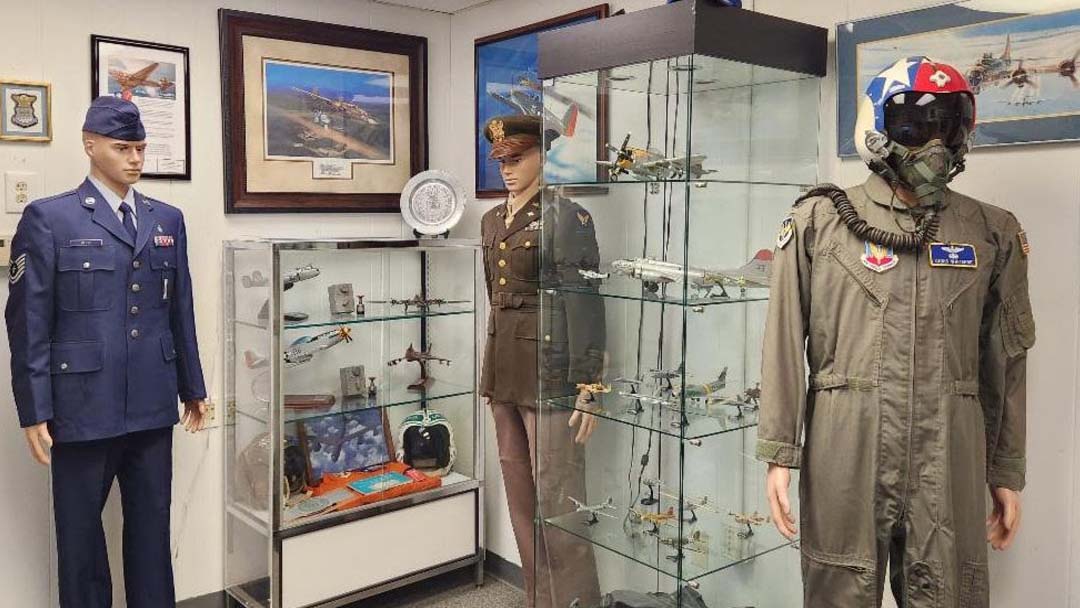
New museum exhibit honors the history of the US Air Force, displaying uniforms from WWI to the present
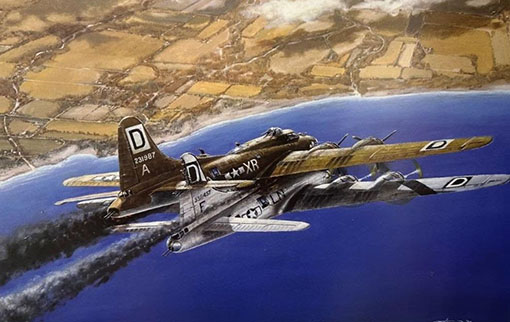
“The Piggyback Flight” shown in the painting above
Rodney Remus museum volunteer tells the story of the Piggyback flight
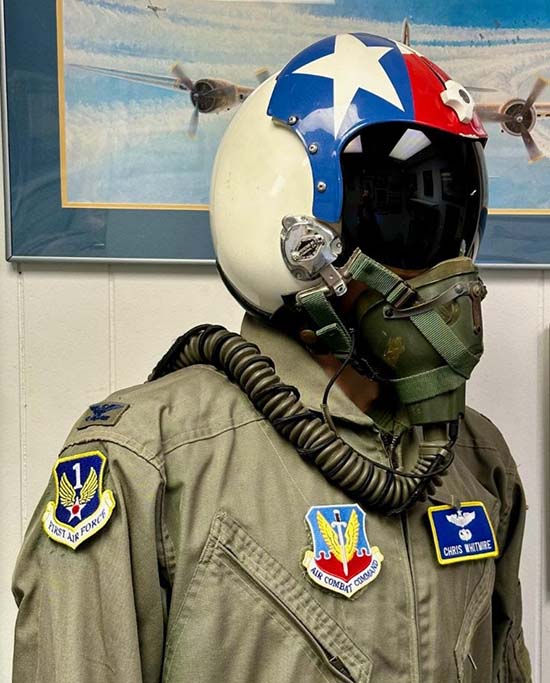
Uniform of Brevard resident Chris Whitmire
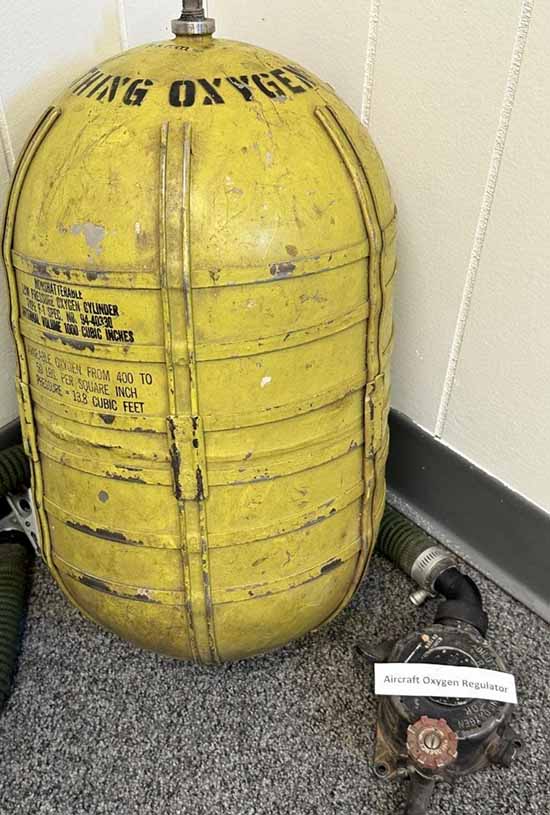
Oxygen regulator
The First Drones
On one wall is the three-dimensional crest of the highly decorated 432 Fighter Wing which was inactivated in 1994. However, in 2007, it was rebranded as the 432 Wing. It forms the U.S. Air Force’s first unmanned (later remotely piloted) aircraft systems wing (i.e., “drones”). The Wing performs unmanned precision attack and intelligence, surveillance, and reconnaissance combat missions, flying the Air Force into a new age.
Air Force Veteran Volunteers
from the freestanding models to the pictures on the walls, these various donated mementos are from people who desired to have their family’s artifacts live on for the enjoyment of others. Many of the museum volunteers have flown or maintained some of the aircraft you see, so if a question arises, feel free to ask any of us. If we don’t know the answer, we’ll get one for you because we “Aim High” each and every day.
Art Cole (Colonel, USAF, Ret.) served for 25 years from 1970-1995. A Command Pilot who held Squadron, Base, and Wing commands, he also held senior level positions in Headquarters/Strategic Air Command and the office of the Secretary of Defense. Operationally, he flew the EC-47, T-39, KC-135, and B-52. After retirement he flew 16 years with the Federal Express Corporation. He volunteers at the Veterans History Museum of the Carolinas.
